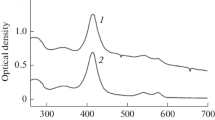Summary
Resealed erythrocyte ghosts have been proposed as in vivo carriers for enzyme replacement therapy of inherited metabolic diseases. In comparative studies of methods for reversible hypotonic haemolysis of erythrocytes, a five-fold increased entrapment of human serum albumin was obtained by use of a dialysis procedure instead of direct dilution. The percentage incorporation of protein was also affected by varying mixing procedure, haematocrit, lysis, and resealing times but not by varying buffer composition or added protein concentrations over a wide range. Higher protein entrapment was observed with time-expired blood compared to fresh blood and this may be ascribed to increased osmotic fragility of the erythrocyte membrane in stored cells. Haemolysed and resealed ghosts prepared by any method used were smaller than normal erythrocytes as measured with a Coulter Counter and with a fluorescence-activated cell sorter, and protein entrapment reduced the ghost size further.
Zusammenfassung
Reversibel verschlossene Erythrozytenschatten (ghosts) sind als in-vivo-Trägersysteme für die Enzymsubstitution bei angeborenen Stoffwechselleiden vorgeschlagen worden. Ein Vergleich von Methoden zur reversiblen hypotonen Hämolyse zeigte, daß die fünffache Menge an Serumalbumin eingeschlossen werden konnte, wenn eine Dialysemethode anstelle der direkten Hämolyse angewandt wurde. Hämatokrit, Mischtechnik und Dauer der hypotonen und isotonen Phasen beeinflußten die Höhe des Proteineinschlusses. Der Prozentsatz der Inkorporation blieb jedoch konstant, wenn die Pufferzusammensetzung oder die extrazellulären Proteinkonzentrationen verändert wurden. Höher war der Proteinschluß, wenn Erythrozyten von Blutkonserven und nicht von frischem Blut verwandt wurden, was auf die verminderte osmotische Resistenz der konservierten Erythrozyten zurückzuführen sein dürfte. Das Volumen der Erythrozytenschatten war bei Messungen mit einem Coulter Counter sowie mit einem Gerät zur fluoreszenzaktivierten Zelltrennung (FACS) kleiner als das normaler Erythrozyten und noch kleiner, wenn Protein eingeschlossen war.
Similar content being viewed by others
References
Adriaenssens, K., Karcher, D., Lowenthal, A., Terheggen, H. G.: Use of enzyme-loaded erythrocytes in in vivo correction of arginase-deficient erythrocytes in familial hyperargininemia. Clin. Chem.22, 323–326 (1976)
Brady, R. O., Pentchev, P. G., Gas, A. E., Hibbert, P. S., Dekaban, A. S.: Replacement therapy for inherited enzyme deficiency. Use of purified glucocerebrosidase in Gaucher's disease. N. Engl. J. Med.291, 989–993 (1974)
Chang, T. M. S.: Rationale and strategies for the therapeutic applications of immobilized enzymes. In: Biomedical applications of immobilized enzymes and proteins, T. M. S. Chang (ed.), pp. 93–104. New York: Plenum Press 1977
Dale, G. L., Villacorte, D. G., Beutler, E.: High-yield entrapment of proteins into erythrocytes. Biochem. Med.18, 220–225 (1977)
Deloach, J., Ihler, G.: A dialysis procedure for loading erythrocytes with enzymes and lipids. Biochim. Biophysiol. Acta496, 136–145 (1977)
Gregoriadis, G., Leathwood, P. D., Ryman, B. E.: Enzyme entrapment in liposomes. FEBS Letters14, 95–99 (1971)
Hoffmann, J. F.: On the relationship of certain erythrocyte characteristics to their physiological age. J. Cell. Comp. Physiol.51, 415–423 (1958)
Ihler, G. M., Glew, R. H., Schnure, F. W.: Enzyme loading of erythrocytes. Proc. Nat. Acad. Sci. USA70, 2663–2666 (1973)
Katchalsky, A., Kedem, O., Klibansky, C., de Vries, A.: Rheological considerations of the hemolysing red blood cell. In: Flow properties of blood and other biological systems, A. L. Copley, G. Stainsby (eds.), pp. 155–163. New York: Pergamon Press 1960
Thorpe, S. R., Fiddler, M. B., Desnick, R. J.: Enzyme therapy V. In vivo fate of erythrocyteentrappedβ-glucuronidase inβ-glucuronidase-deficient mice. Pediat. Res.9, 918–923 (1975)
Tyrrell, D. A., Ryman, B. E.: The entrapment of therapeutic agents in resealed erythrocyte ‘ghosts’ and their fate in vivo. Biochem. Soc. Trans.563, 677–680 (1976)
Updike, S. J., Wakamiya, R. T., Lightfoot, E. N.: Asparaginase entrapped in red blood cells: action and survival. Science193, 681–683 (1976)
Weed, R. I., LaCelle, P. L., Merrill, E. W.: Metabolic dependence of red cell deformability. J. Clin. Invest.48, 795–809 (1969)
Zimmermann, U.: Deutsches Patentamt, Auslegeschrift 23 26 161 vom 23.5.1973
Zimmermann, U., Riemann, F., Pilwat, G.: Enzyme loading of electrically homogenous human red blood cell ghosts prepared by dielectric breakdown. Biochim. Biophys. Acta436, 460–474 (1976)
Author information
Authors and Affiliations
Rights and permissions
About this article
Cite this article
Sprandel, U., Hubbard, A.R. & Chalmers, R.A. In vitro studies on resealed erythrocyte ghosts as protein carriers. Res. Exp. Med. 175, 239–245 (1979). https://doi.org/10.1007/BF01851280
Received:
Accepted:
Issue Date:
DOI: https://doi.org/10.1007/BF01851280




